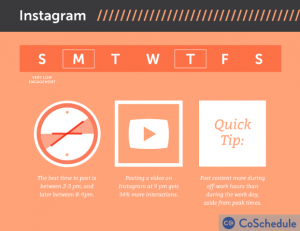By Jennifer Gendron
Lately, I have been thinking about how we define health. Too often, we try to slot health into neat and tidy categories. We view mental, physical, and social wellness as existing independently of each other. In reality, this couldn’t be further from the truth: All aspects of our well-being are interconnected and impact each other.
As a business leader, a parent, and a former social worker, I’ve seen how the mind impacts the body, and vice versa, again and again. Personally, I’ve seen that on days when I get too busy to get in some movement—whether that means my regular spin session or a quick hike outdoors—my mood suffers, as does my sleep. This makes sense, because the brain and the body are inseparable, and this connection is hardwired into the structure of our brains.
People with a long-term physical condition are more likely to experience mental health struggles, and the reverse is also true—long-term mental health challenges are linked to an increased incidence of physical illness. Consider this: People with diabetes are 2 to 3 times more likely to develop depression and people with severe depression are 3 times more likely to experience a cardiac event.
To make matters worse, mental and physical health conditions have an additive effect on well-being when they co-occur. For example, when someone is experiencing both heart disease and depression, they’re likely to experience double the reduction in social interaction. And loneliness further impacts mental and physical health with a negative impact roughly equivalent to smoking 15 cigarettes daily. While correlation doesn’t always equal causation, it’s clear that we need to be treating the mind and body together (or at least with the same level of care).
So, how can business leaders and employers begin to shift their approach to better support the whole-body health of their workforce? Here are a few areas I focus on with my teams for maximum impact.
1. Think about mind and body as one
When we look at the mind and body as equally important elements of whole-body health, we can then do the work to make sure both are taken care of. As a business leader, I make a point of regularly communicating to my team about how I prioritize my mental and physical well-being and encourage them to take the time they need to take care of themselves throughout the day as well. That can mean taking a walk and getting steps in during a call, or switching off for a middle-of-the-day meditation.
Movement is especially key to my well-being and I try to incorporate movement into breaks throughout my day—my team will sometimes see me moving from one room in my house to the next as we start a meeting, or wrangling my dogs, who are always excited for camera time (and have also been shown to positively impact mental health). I’ve seen this in my own experience, and have noticed how strongly regular exercise influences my sons’ moods and mental well-being.
2. Keep stress in check
While some stress is a given for most of us, it shouldn’t be a constant. Persistently high levels of stress are bad for both mental and physical health. Up to 90% of disease is related to the stress system activation, and stress is strongly linked to depression and anxiety, poor sleep, and bodily inflammation. Helping your employees learn stress management skills has the potential to not only improve holistic health but also workplace productivity, talent retention, and overall quality of life.
To help my teams (and my family) deal with stress, I use a three-pronged, practical approach. First I zoom in on what’s happening and see what immediate help I can offer—taking a task off someone’s plate, just actively listening, or encouraging them to take a break. Second, I zoom out to the bigger picture and think about how I can better equip my people to cope with stress in the future. Do they need access to additional resources? Are workloads too heavy? Or in the case of my kids, are they involved in too many extracurricular activities? Is everyone getting the movement and nutrition they need to thrive? Finally, I internalize any lessons from what’s happened so I can take needed actions to successfully manage stressful situations in the future.
3. Encourage people’s outside interests
I’m fortunate to work in an industry where nearly everyone is here because they’re highly passionate about the work. But in my mind, that makes it even more important that my teams cultivate interests outside the workplace. That escape can be a book club or on the water, paddle surfing (my calm place). It’s important that they take time away to rest and recover.
As a business leader, one way I encourage this is with my team chit-chats and regular conversations about what we’re doing in our free time. Another is by insisting my employees take their time off. Finally, perhaps my favorite way to support my team in pursuing their outside interests is leading by example—enjoying my time off. I love to get out in nature, and when I return, to share pictures of wildlife I spotted.
With only so many hours in the day—and even fewer in the workday—whole-body well-being is too often overlooked. While we speak to the subject more and more, it bears repeating: whole-body health and well-being are key to both quality of life and sustainable business success. When employees are healthy, they’re more likely to show up for work each day feeling productive, motivated, and happy—and what could be better than that?
Jennifer Gendron is the global chief commercial officer for Koa Health.
(4)







